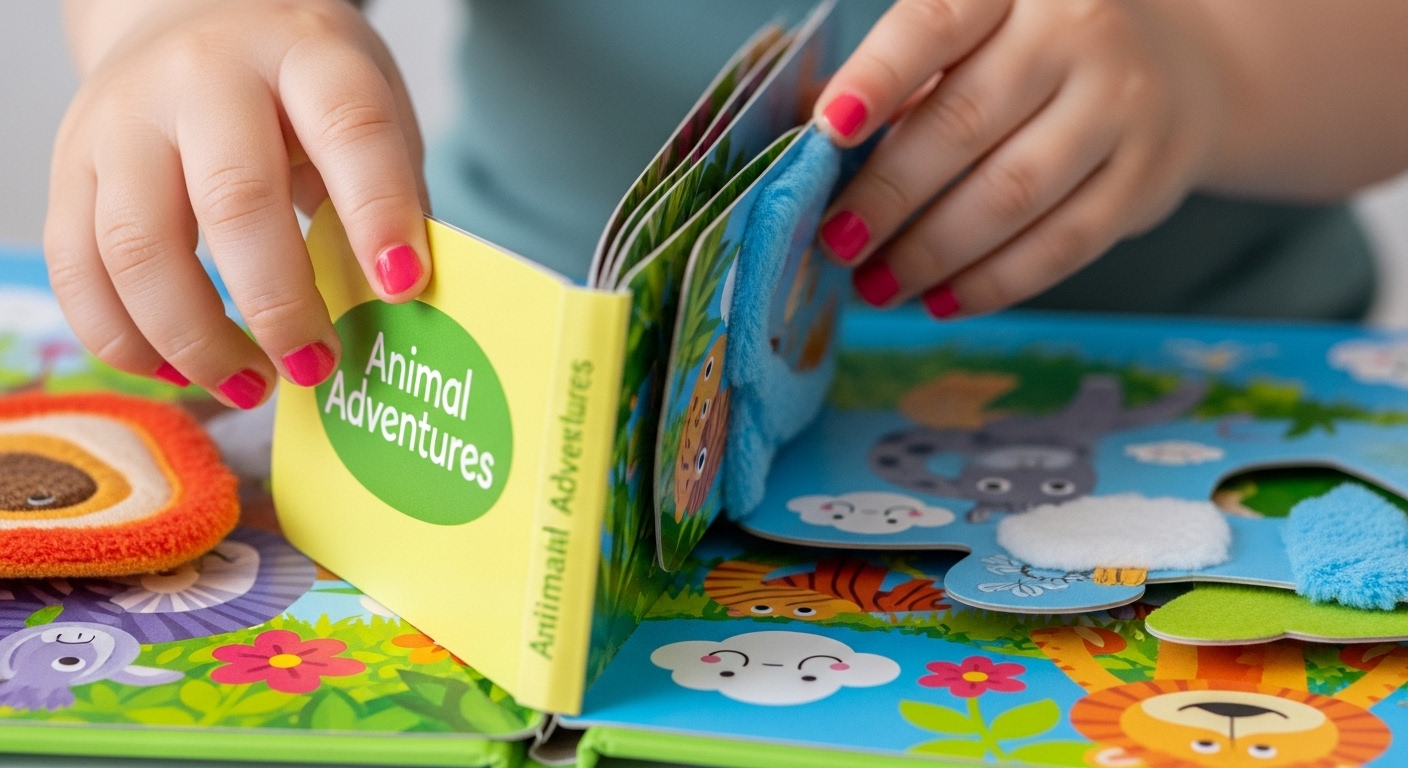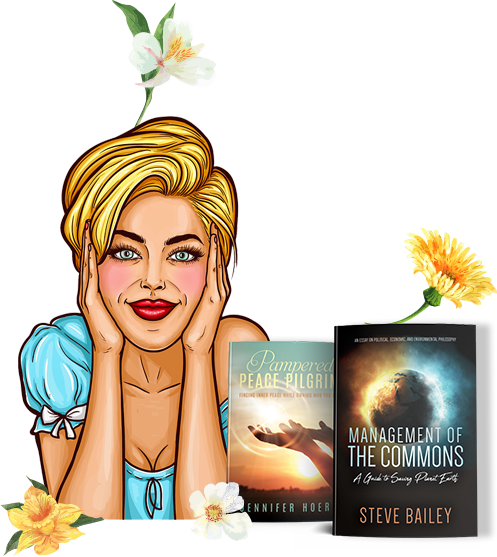
Writing a children’s book for toddlers is both a delightful and challenging endeavor. Toddlers, aged 1 to 3 years, are just beginning to develop their language, understanding of the world, and love for books. This means your story must be simple yet engaging, educational yet entertaining, and visually stimulating. If you’re looking to create a lasting impact with your toddler book, this blog offers a complete roadmap—from ideation to publication.
Table of Contents
ToggleUnderstanding the Toddler Audience
Before you begin writing, it’s crucial to understand who you’re writing for. Toddlers are in a stage of rapid cognitive and emotional development. Their books should be:
- Short and simple: Limited vocabulary and short sentences work best.
- Rhythmic and repetitive: Toddlers enjoy patterns and repeated sounds.
- Illustration-rich: Visual storytelling is essential, as many toddlers can’t yet read.
- Emotionally relatable: Stories should revolve around daily routines, relationships, animals, or simple adventures.
Knowing your audience ensures that your book resonates with them and encourages repeated readings—a hallmark of successful toddler books.
Step-by-Step Guide to Writing a Toddler’s Book
Step 1: Choose the Right Concept or Theme
Every great children’s book starts with a solid idea. For toddlers, the concept should be easily digestible. Popular themes include:
- Animal adventures
- Bedtime routines
- Learning colors, numbers, or shapes
- Dealing with emotions
- Friendship and family
Keep the central message positive and gentle, with a warm tone. Avoid complex plots or abstract ideas, and stick to one main theme per book.
Step 2: Develop a Simple Story Structure
Toddlers don’t need complicated story arcs. A successful toddler book typically follows a straightforward structure:
- Beginning – Introduce the character and setting.
- Middle – Present a simple situation or conflict.
- End – Resolve the situation with a happy or reassuring conclusion.
The narrative should be easy to follow and wrap up within 8 to 12 spreads (usually 16 to 24 pages). Repetition, rhyme, and rhythm are particularly effective at this age.
Step 3: Create Relatable and Lovable Characters
Characters in toddler books should be:
- Easy to recognize: Animals, children, and friendly monsters are common favorites.
- Emotionally expressive: Clear facial expressions help toddlers understand emotions.
- Consistent in behavior: Predictable actions build a sense of security.
Keep character names short and fun to pronounce. Consider characters that can be developed into a series for extended engagement.
Step 4: Write with Rhythm, Rhyme, and Repetition
Language is key when writing for toddlers. They respond best to:
- Rhyme: Rhyming words support phonetic development and make reading aloud more fun.
- Repetition: Repeating phrases or structures reinforces understanding and creates anticipation.
- Rhythm: A musical flow in sentences keeps toddlers engaged.
Example:
“Hop, hop, hop! The bunny won’t stop!
Over the hill and under the mop!”
Such patterns make your book memorable and help toddlers join in during reading time.
Step 5: Use Age-Appropriate Vocabulary
Use simple and clear language. Words should be:
- Concrete: Avoid abstract or conceptual language.
- Familiar: Stick to words toddlers likely hear in daily life.
- Phonetically friendly: Choose words that sound pleasing and are easy to pronounce.
Use tools like age-appropriate vocabulary lists or read popular toddler books to get a feel for suitable word choices.
Step 6: Pair the Story with Vivid Illustrations
In toddler books, illustrations often carry as much (or more) weight as the text. Consider the following:
- Hire a professional illustrator or use illustration software if you’re self-publishing.
- Ensure page-to-page consistency in characters and colors.
- Avoid cluttered artwork: Clear, bold, and colorful visuals work best.
- Leave space for the text: Make sure words are legible and not overwhelmed by images.
For wordless or minimal text books, illustrations must tell the entire story. In these cases, collaboration with an illustrator becomes even more critical.
Step 7: Format the Book for Toddlers
Toddler books come in different formats depending on age and function:
- Board books (ideal for ages 1–3): Durable pages for small hands.
- Lift-the-flap or touch-and-feel books: Add sensory elements to enhance engagement.
- Interactive books: With textures, tabs, or sounds that invite participation.
Regardless of format, keep the book small, sturdy, and easy to handle.
Step 8: Edit and Proofread Carefully
While the text may be minimal, editing is still crucial. Focus on:
- Clarity and flow: Read it aloud multiple times to ensure it sounds natural.
- Consistency: Make sure character names, colors, and story logic are consistent.
- Grammar and punctuation: Even short sentences need proper punctuation.
Enlist the help of a professional editor or proofreader who specializes in children’s literature. They can help you refine the language and structure while maintaining age-appropriateness.
Step 9: Seek Feedback from Parents and Educators
Before publishing, test your story on the real audience:
- Read the book to toddlers and observe their reactions.
- Ask parents or early childhood educators for feedback.
- Adjust pacing, wording, or visuals based on what engages the children most.
Real-world feedback is invaluable. What works on paper may not always translate into toddler delight.
Step 10: Choose the Right Publishing Path
You can choose between traditional publishing and self-publishing. Each has pros and cons:
Traditional Publishing:
- Submit a manuscript to children’s book publishers or literary agents.
- Often requires a query letter and adherence to submission guidelines.
- If accepted, the publisher handles editing, illustration, marketing, and distribution.
Self-Publishing:
- More creative control and quicker turnaround.
- You’ll need to hire illustrators, editors, and designers yourself.
- Platforms like Amazon KDP and IngramSpark allow for print-on-demand services.
Regardless of the route, invest in professional illustration, and layout design services to ensure your book meets publishing standards.
Step 11: Market Your Toddler Book Effectively
Once your book is ready, you need to get it into the hands of parents, teachers, and caregivers. Consider:
- Creating a website or blog to share your journey and promote the book.
- Using social media to reach parenting communities.
- Attending book fairs, preschool readings, or author events.
- Partnering with early childhood educators for classroom use.
Visual platforms like Instagram and Pinterest work well for children’s book marketing due to their image-friendly nature.
Step 12: Keep Writing and Build a Series
If your first book finds an audience, consider turning it into a series. Toddlers enjoy familiarity and love revisiting beloved characters. A series can include:
- Books focusing on different emotions or daily tasks.
- Seasonal themes (e.g., holidays, weather).
- Alphabet, numbers, or animal series.
Series create brand recognition and long-term value.
Final Thoughts
Writing a children’s book for toddlers requires thought, simplicity, and creativity. It’s not just about cute rhymes and colorful illustrations—it’s about creating a safe, joyful space for early learning and bonding. From concept development to editing and publishing, each step shapes how your little readers engage with your story. With patience and care, your book could become a treasured part of a child’s early years.





